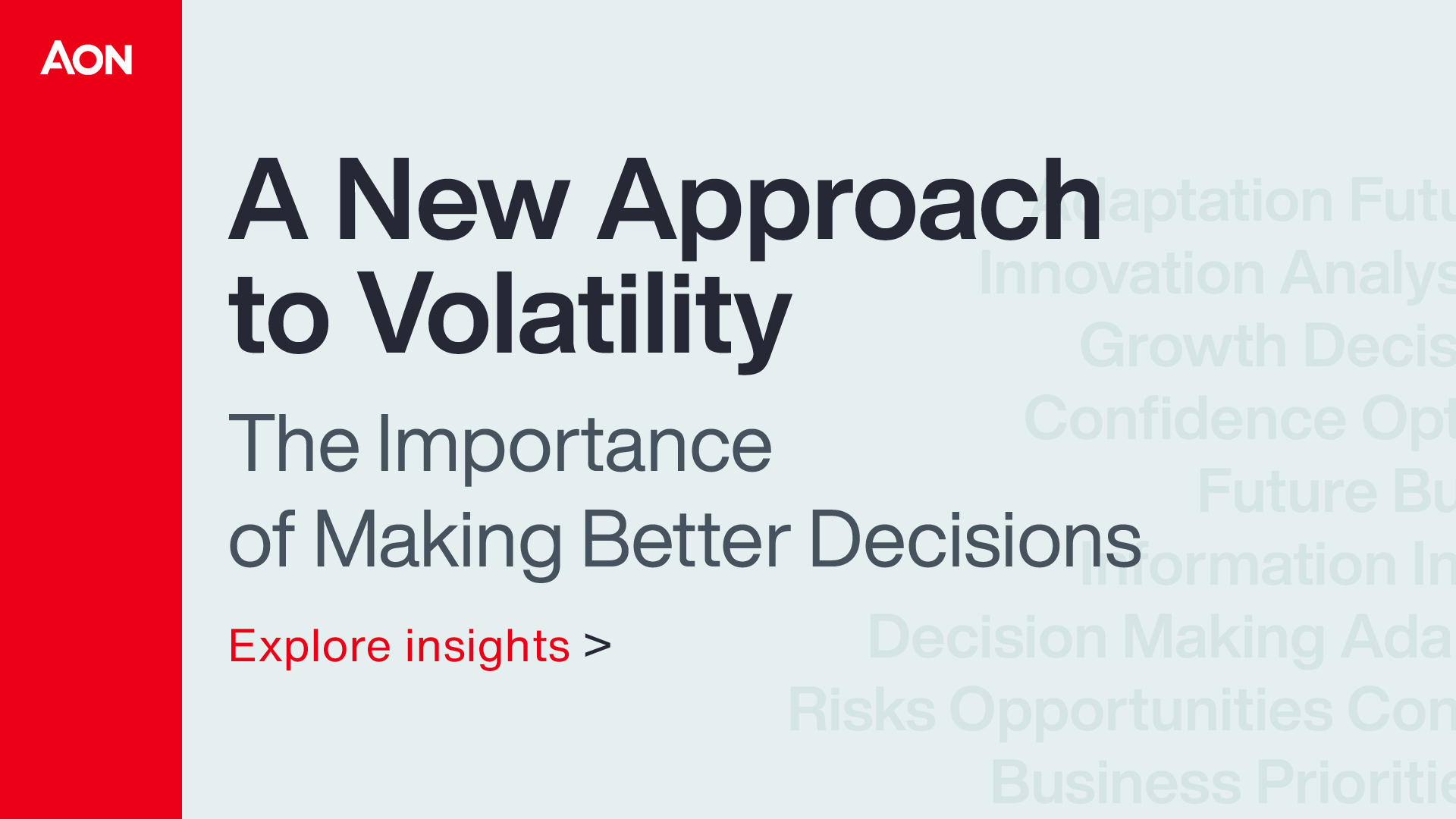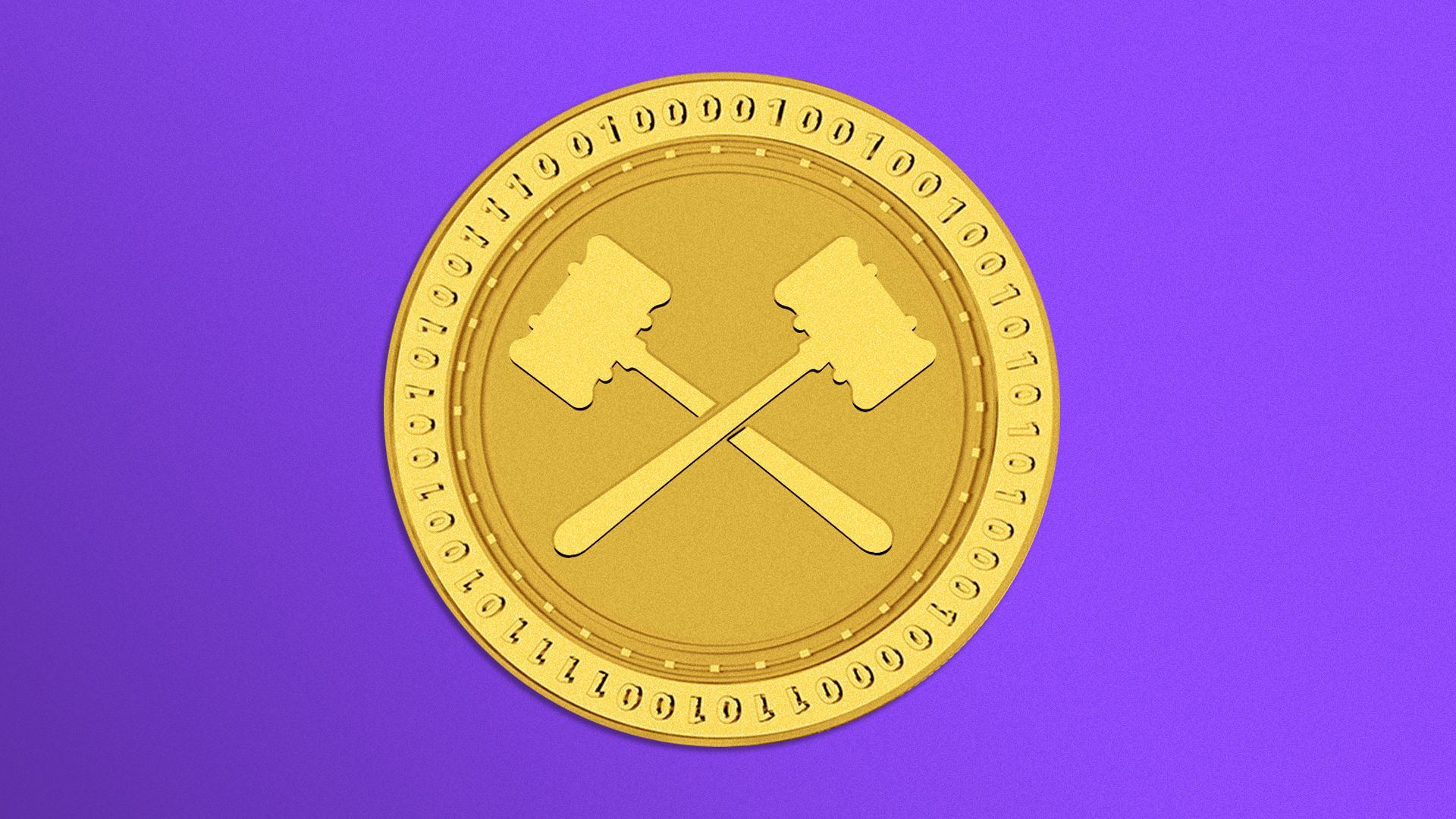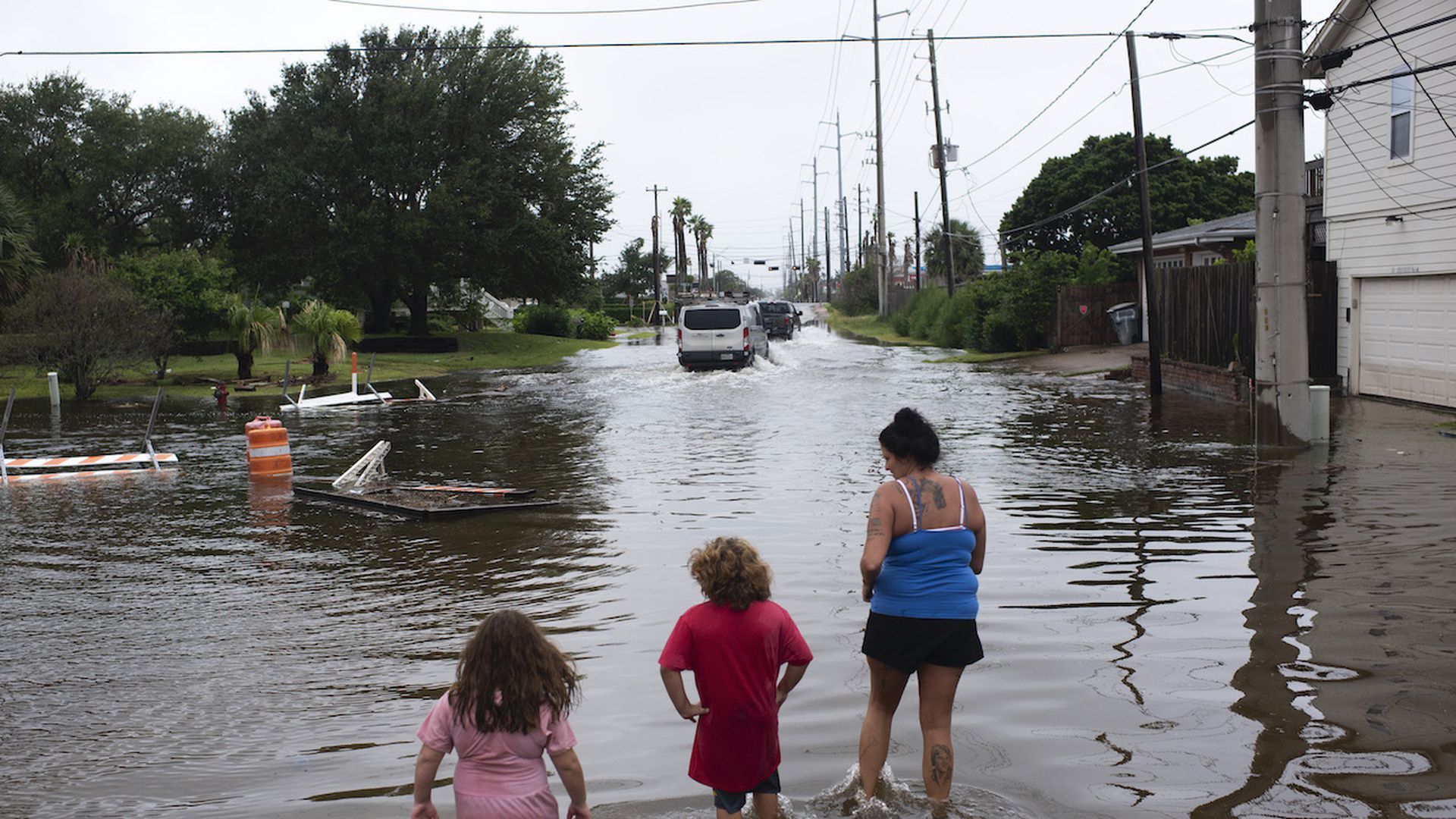| | | | | | | Presented By Aon | | | | Axios Markets | | By Kate Marino ·Oct 15, 2021 | | 💰 Good morning and welcome to Friday! 🥳 📈 Stat of the day: The price of the industrial base metal zinc shot up 13% in just a week, hitting a 14-year high, per FactSet. - The reason? Another casualty of the European energy shortage, Dutch zinc producer Nyrstar cut production by as much as 50%, blaming high electricity costs. 🔌
⏱ Today's newsletter is 1,275 words, 5 minutes. | | | | | | 1 big thing: Wagers rush in on Fed chair pick |  | | | Illustration: Aïda Amer/Axios | | | | The explosion in retail trading is one sign of the flush consumer's betting fervor. The amped-up rush to wager on political outcomes — like whether Jerome Powell gets another Fed chair term — is another, Axios' Courtenay Brown writes. - Per data provided to Axios from PredictIt, cumulative trading activity for the next Fed chair is double what it was the last time there was a similar market on the political trading platform that's closely watched by traders.
- That was in 2017 when then-Fed chair Janet Yellen was up for renomination. (At this point then, Powell led the market, though Kevin Warsh was ahead a few days prior.)
Why it matters: PredictIt — and other sites like it — aren't always right. But it's valuable because in real time, it "distills the consensus into a single number," says Bianco Research's Jim Bianco, who regularly tweets out updates. - As of Thursday, buying in on Powell's renomination costs 73 cents (and if you're right, you win $1 — less fees). Put another way, the prediction market sees a 73% chance Powell gets another four years.
Of note: No user can put more than $850 on a single contract — a "yes" or "no" on a certain political outcome — and just 5,000 people can hold shares in any contract at one time. - In other words, mega-bets on the next Fed chair aren't happening on PredictIt. That happens elsewhere, indirectly (like interest rate futures).
Between the lines: "There are times when what's going on in prediction markets doesn't seem totally consistent with other markets where people are putting billions of dollars to work," says Jens Nordvig, who previously led fixed income and currency strategy at Nomura before founding his own firm, Exante Data. - In the case of the Fed chair, though, "people's probabilities have shifted, and that's reflected in PredictIt, and also reflected in how people think about what are the risks to interest rates," says Nordvig, who notes those moves can happen in tandem.
Where it stands: Contracts on Powell's reappointment are off their highs amid vocal opposition in Washington that's gotten louder since the scandal over some Fed members' financial holdings. - Contracts on Lael Brainard, who currently serves on the Fed board, spiked.
The intrigue: A Fed pick announcement ends the suspense, but it won't trigger winnings for prediction market traders. - That only happens when the Senate OKs the pick, because of the way the question that the market's built on is phrased: "Whom will the Senate next confirm as Chair of the Federal Reserve?"
Go deeper. |     | | | | | | Bonus chart: Where the odds stand |  Data: PredictIt.org; Note: Shows leading candidates; Chart: Axios Visuals |     | | | | | | 2. Catch up quick | | Americans who haven't gone back to work yet are holding back for a vast number of reasons, some of which are outlined by 10 individuals that shared their stories. (Bloomberg) The Justice Department charged a former chief test pilot for Boeing with fraud for allegedly deceiving authorities about the flight controls on 737 Max airplanes, the model that led to crashes that killed hundreds of people. (Washington Post) A deal for China Evergrande to sell its Hong Kong headquarters for $1.7 billion has collapsed, a setback for the struggling property developer that's missed three bond payments in the last month, two sources said. (Reuters) |     | | | | | | A message from Aon | | New risks require better decisions | | |  | | | | In the wake of COVID-19, Aon surveyed 800 leaders across the U.S., the EU, the United Kingdom and Canada to learn how the experience has changed how companies integrate risk assessment, data and expertise to mitigate volatility. Here's what they said. | | | | | | 3. This is what a margin squeeze looks like |  Data: U.S. Bureau of Labor Statistics; Chart: Jared Whalen/Axios Two inflation indexes out this week, taken together, show how companies' margins are getting squeezed. Why it matters: Corporate earnings growth, while still historically high, is receding from record second-quarter levels. Margins will be a huge focus during Q3 earnings calls this month. The big picture: Prices that consumers pay for goods and services have been rising this year, but wholesale prices have risen faster, shrinking the rate of profits that some companies make off their revenue. - The alternative, of course, is that consumers shoulder all of the rising costs.
Details: The Consumer Price Index grew 0.5% in September, while its wholesale companion, the Producer Price Index, grew by 0.7%. - The total PPI reading has outweighed the headline CPI every month this year.
The bottom line: Expect more price hikes to flow through to consumers. - "We're going to find out in the coming months what kind of pricing power [companies] have. It's going to impact profitability if they don't raise prices more," Tony Roth, CIO at Wilmington Trust, tells Axios.
|     | | |  | | | | If you like this newsletter, your friends may, too! Refer your friends and get free Axios swag when they sign up. | | | | | | | | 4. Dueling visions of crypto regulation |  | | | Illustration: Aïda Amer/Axios | | | | Two of the world's biggest cryptocurrency exchanges laid out their respective big-picture visions for how their ecosystem should be regulated on Thursday. The differences between them are stark, Axios' Felix Salmon writes. Why it matters: One of the exchanges, Coinbase, is a big and centralized American company, subject to all U.S. rules and regulations and listed on the Nasdaq. The other, FTX, is a younger, nimbler decentralized exchange of no fixed abode, willing and able to conduct most of its activity outside the reach of U.S. regulators. - The twist: Coinbase is taking a much more extreme position than FTX, essentially saying that the current U.S. regulatory regime is incapable of effectively regulating digital currencies, and proposing an entirely separate regulator for itself and other crypto companies.
- FTX, on the other hand, is trying to find constructive solutions within the existing regulatory infrastructure.
What they're saying: FTX sees crypto becoming "a new and beneficial component" of the existing U.S. financial infrastructure, adding that it should "meet the same market integrity metrics." The SEC and CFTC "largely provide the model for how this regulation can look," says the company. - The other side: Coinbase says that existing laws "do not have room for the transformational potential that digital assets and crypto innovation make possible" and that therefore the only workable solution is a brand new regulator for digital assets, entirely separate from the SEC, CFTC, and every other currently existing institution.
Between the lines: The FTX approach is by its own admission evolutionary. "There will certainly be iterative steps," they say, urging regulators to do "something now, to start the regulatory process moving." That's entirely in line with how regulations normally evolve. - Coinbase wants something much more revolutionary — and also much less thought out. In a call with Axios on Thursday Coinbase's chief policy officer, Faryar Shirzad, repeatedly said that he was just trying to start a debate with his proposal and that he wasn't at all sure how the proposed new regulator would be able to interact with the existing U.S. regulatory framework.
The bottom line: The Coinbase paper is in line with CEO Brian Armstrong's adversarial stance toward regulators. But there are obvious tactical risks involved in telling people like SEC chair Gary Gensler they're completely wrong about the role they see themselves playing. |     | | | | | | 5. Climate is too big to fail |  | | | Zailey Segura, Zavery Segura and their mother, Karen Smith wade through flood waters after Hurricane Nicholas landed in Galveston, Texas on Sep. 14, 2021. Photo: Mark Felix/Getty Images | | | | A new White House report says climate change poses "systemic risks" to the U.S. financial system — framing that top aides emphasized to promote wide-ranging moves to weave climate risk into many agencies' new policies and regulations, Axios' Ben Geman writes. Driving the news: This morning the White House released a "roadmap" to building a "climate-resilient" economy. The big picture: The report asserts that "U.S. financial markets and institutions face systemic risks from climate change." Senior officials called the conclusion significant. - "That term, 'systemic risk', carries a lot of weight," Bharat Ramamurti, deputy director at the National Economic Council, told reporters Thursday night.
- "Its inclusion in this roadmap reflects our belief that because many financial models and investment portfolios still rely on out-of-date assumptions of climatic stability, climate change is already creating severe disruptions to our economic and financial system," he said.
Our thought bubble, via Felix: By labeling climate change a systemic risk to financial markets, the White House is effectively instructing the Financial Stability Oversight Council to start quantifying it and try to work on preventive measures. The FSOC hasn't achieved much to date, but in theory, it is very powerful. Keep reading. |     | | | | | | A message from Aon | | Preparing for tomorrow's risks today | | |  | | | | In an Aon survey of 800 C-suite and senior executives, most business leaders agree: The COVID-19 pandemic exposed new vulnerabilities, driving willingness to invest in preparation for the interconnected risks that are ahead. Explore our findings. | | | | 📫 Thanks for reading. A reminder that your family, friends and colleagues can subscribe to Markets or any of Axios' other free newsletters through this link. |  | | It'll help you deliver employee communications more effectively. | | | | | | Axios thanks our partners for supporting our newsletters. If you're interested in advertising, learn more here.
Sponsorship has no influence on editorial content. Axios, 3100 Clarendon Blvd, Suite 1300, Arlington VA 22201 | | | You received this email because you signed up for newsletters from Axios.
Change your preferences or unsubscribe here. | | | Was this email forwarded to you?
Sign up now to get Axios in your inbox. | | | | Follow Axios on social media:    | | | | | |













No comments:
Post a Comment